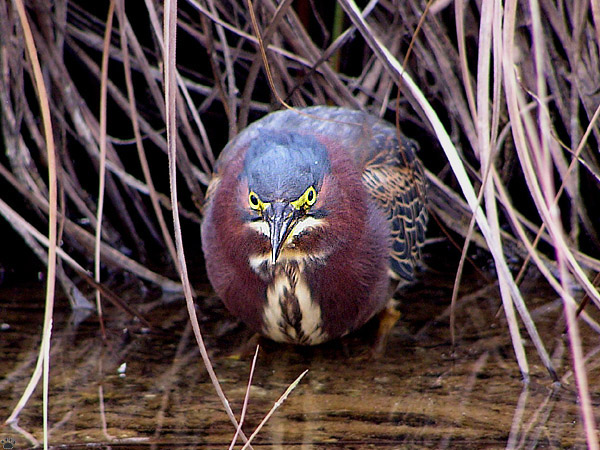
Green heron (Butorides virescens), T. M. Goodwin Waterfowl Management Area. |
Florida, part 12: Wading birds (continued)
Some species of Florida herons are a bit more difficult to see. Green heron isn't particularly shy, but prefers small ponds and densely wooded streams, and is perfectly camouflaged outside the breeding season.
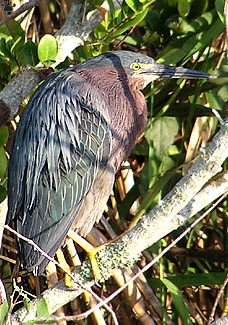
Green heron, Blue Springs State Park. |
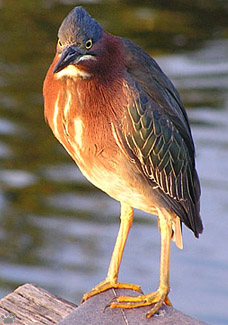
Green heron, Everglades National Park. |
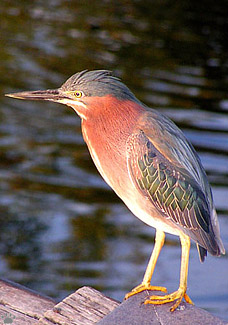
Green heron in breeding plumage, ENP. |
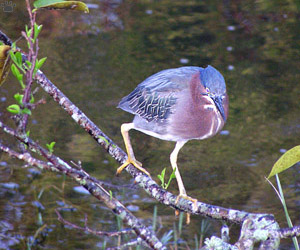
Green heron, Sawannas State Preserve. |
Green heron hunts small fish and insects by perching on a branch over the water. It can remain motionless for hours. Its nests are also above the water. |
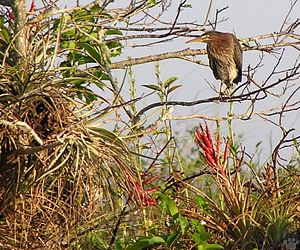
Green heron near its nest in a clump of airplants (Tillandsia), ENP. |
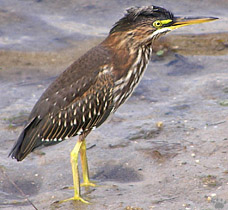
Immature green heron, Little Talbot Island State Park. |
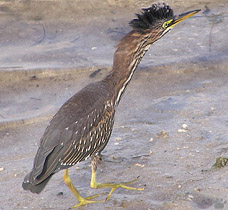
Immature green heron, LTISP. |
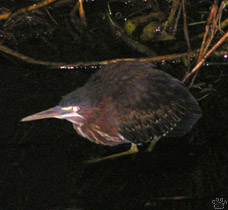
Green heron hunting at night, ENP. |
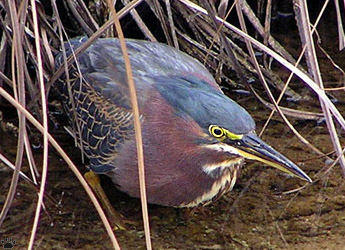
Green heron fishing, TMGWMA. |
Chicks leave the nest very early and wonder from branch to branch under the stares of ever- hopeful alligators. Some walk too close to the water. |
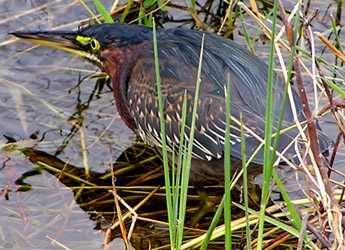
Green heron fishing, St. Sebastian River Buffer Preserve. |
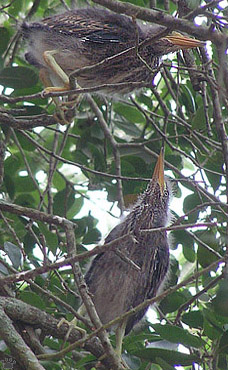 |
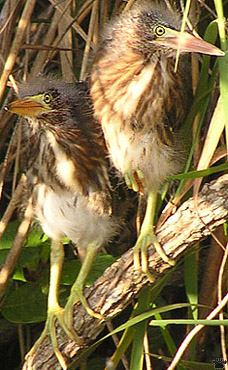
Green heron fledglings, ENP. |
 |
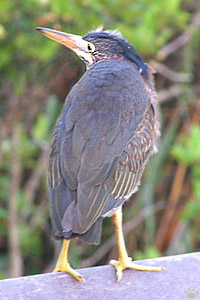
Immature green heron, ENP. |
A pair or two nest every year at Anhinga Trail in the Everglades.
|
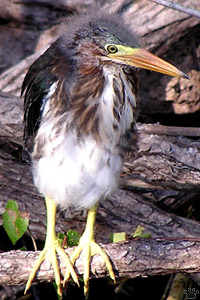
Green heron fledgling, ENP. |
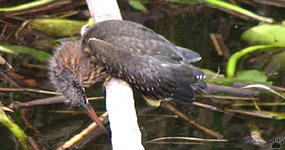
Green heron fledgling, ENP. |
| But adults are less shy and easier to see near Shark Valley parking lot. |
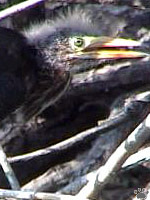 |
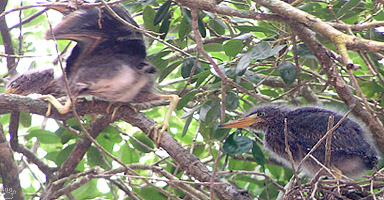
Green heron fledglings (middle) and chicks, ENP. |
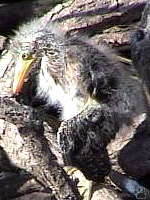 |
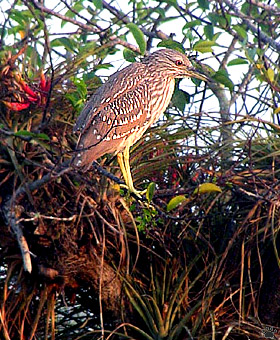
Immature black-crowned night-heron (Nycticorax nycticorax), ENP. |
Black-crowned night-heron is very common in Florida. Sometimes it can be seen fishing in big cities at night, or even during the day. Yellow-crowned night-heron is more rare and local. It hunts in swamps and flooded forests. It eats more crustaceans and mollusks than fish and insects. |
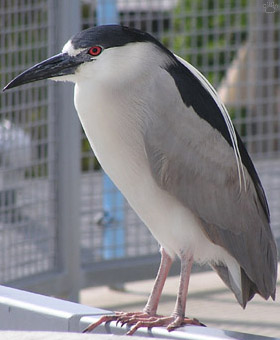
Black-crowned night-heron, Virginia Key. |
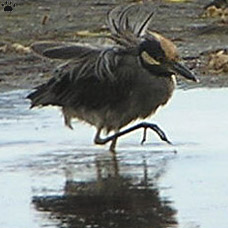 |
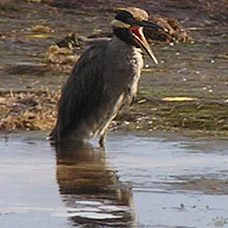 |
 |
| Yellow-crowned night-heron (N. violaceus), Blue Cypress Water Management Area. |
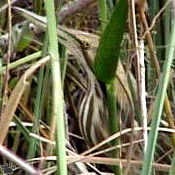
American bittern (Botaurus lentiginosus),
E. Dale Joyner Nature Preserve. |
Bitterns are uncommon and very difficult to see in Florida. So far, I've only seen each of the two species once. They inhabit extensive reed beds, sawgrass marshes, and cattail swamps. They do not nest in colonies. Bitterns are most active at dusk and on moonlit nights. They are masters of camouflage, and have very interesting hiding posture: the bird raises its beak and rocks a bit, trying to match the movement of the surrounding reeds in the wind. |
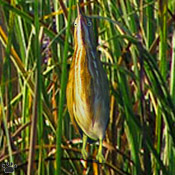
Least bittern (Ixobrychus exilis),
San Felasco Hammock State Preserve. |
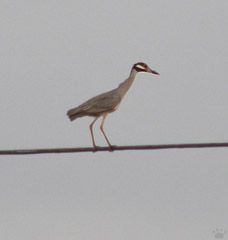 |
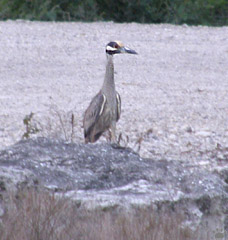 |
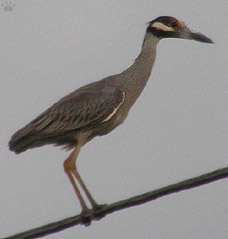 |
Yellow-crowned night-heron, Holey Land Wildlife Management Area. |
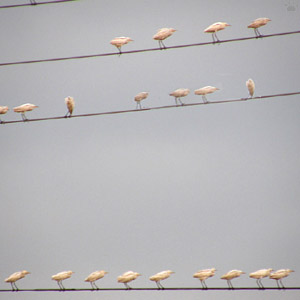
Egrets on utility wires, HLWMA. |
Wading birds seem to be abundant in the Everglades, but their present numbers are just a tiny fraction of what existed before much of the wetlands were drained. |
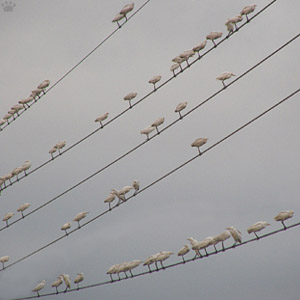
Egrets on utility wires, HLWMA. |
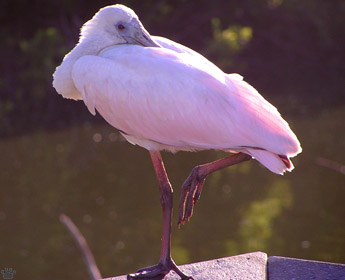 |
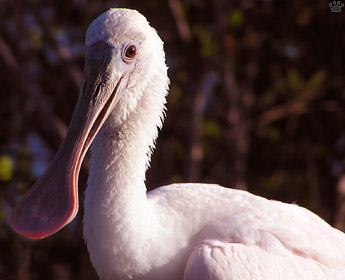 |
| Roseate spoonbill (Platalea ajaja), ENP. |
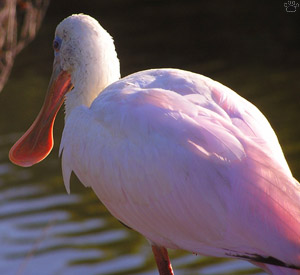
Roseate spoonbill, ENP. |
Roseate spoonbill was once almost extinct in Florida - a result of decades of feather hunting. There are still only a few colonies in the Peninsula. |
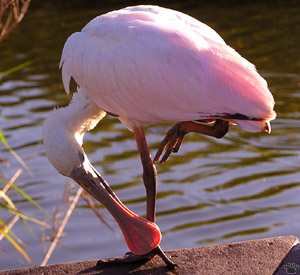
Roseate spoonbill, ENP. |
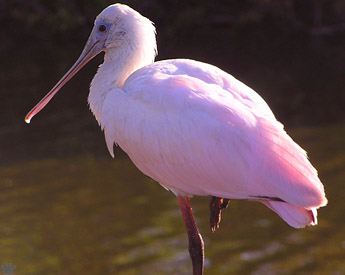 |
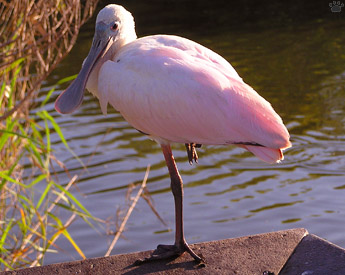 |
| Roseate spoonbill, ENP. |
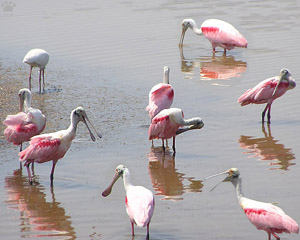
Roseate spoonbills, Merritt Island National Wildlife Refuge. |
Spoonbills are usually very shy, but once I was lucky to meet a very tame bird at Anhinga Trail in the Everglades (photos above). |
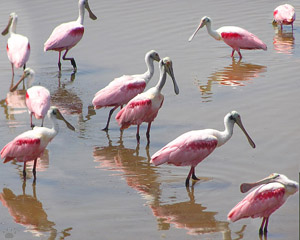
Roseate spoonbills, MINWR. |
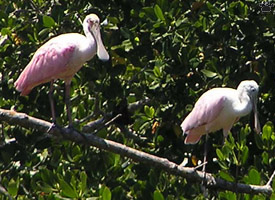 |
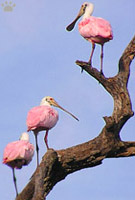 |
 |
| Roseate spoonbills, St. Augustine Alligator Farm Zoological Park. |
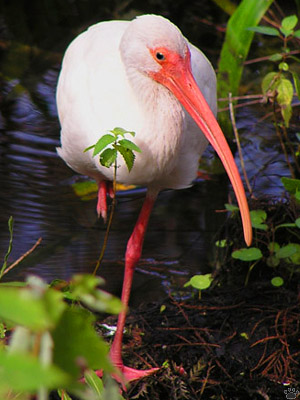
White ibis (Eudocimus albus), Morningside Nature Center. |
White ibis has recovered from overhunting much faster than the spoonbill. You can see flocks of hundreds in the Everglades. Some birds now nest in cities and feed on lawns. Its face turns bright red during the breeding season. |

White ibis, Deltona Scrub Restoration Area. |
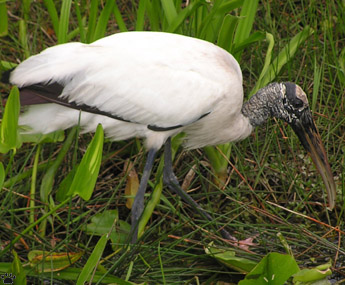
Wood stork (Mycteria americana), Mike Roess Gold Head Branch State Park. |

White ibis, Coral Gables. |
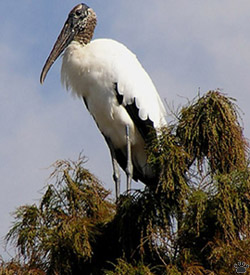
Wood stork, Fort Matansas National Monument. |
Wood stork is the largest wading bird of southern Florida. It has almost driven to extinction by habitat loss, particularly draining of the Everglades. Of the original population of about 60,000 pairs, only a few thousand remain in Florida. They nest in large treetop colonies. Nowadays their breeding often fails due to insufficient food supply. |
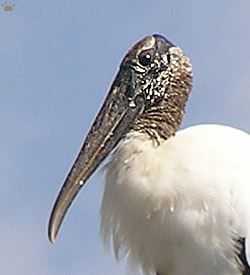
Wood stork, FMNM. |
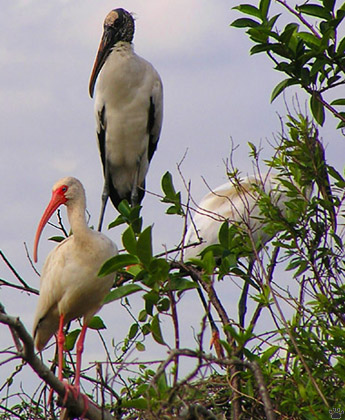
Wood stork and white ibis, ENP. |

Wood stork, Smyrna Dunes Park. |
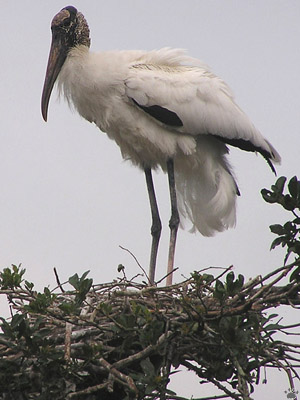
Wood stork at a nest, SAAFZP. |
Wood storks mostly feed by touch, stirring the silt with their legs and snatching anything that moves with their bills. They mostly catch fish, but also frogs and crayfish. They need high prey densities, and would fly far from the colony in search of food. |
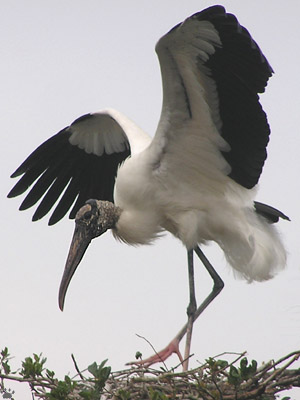
Wood stork at a nest, SAAFZP. |
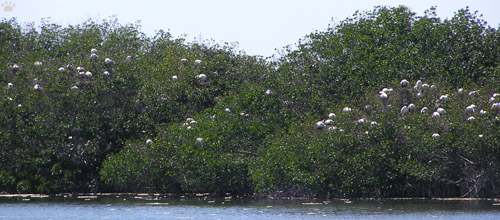
Wood stork colony, ENP. |
Part 13. Wading birds (continued) and seabirds
Back to Part 11
Home
|





















































